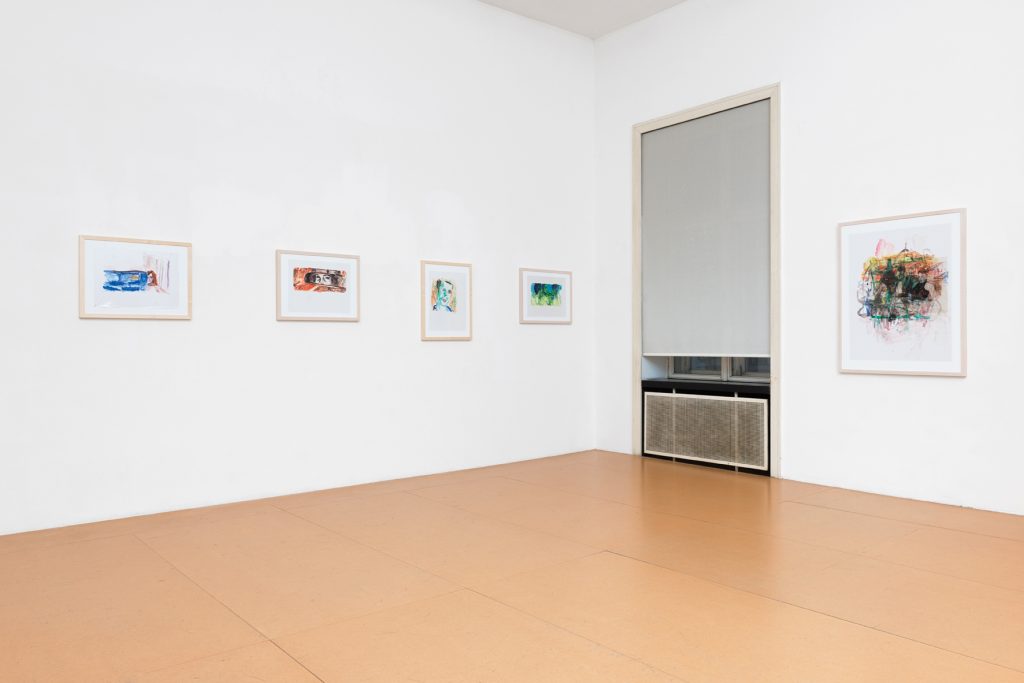John Kelsey
The Canyons
Boltenstern.Raum
Oct 3rd 2014 – Nov 3rd 2014





Exhibition Text
These works are based on a series of watercolors originally produced at the invitation of Keren Cytter, made as illustrations for a book she published in 2013: The Atlantis Search Engine, featuring poetry by Matthew Dickman, Josef Strau and Roman Baembaev. The illustrations themselves were based on production stills from the movie The Canyons, also released in 2013.
There are many interesting things about The Canyons – starring Lindsay Lohan and the porn actor James Deen, screenplay by Bret Easton Ellis, directed by Paul Schrader – foremost perhaps being the strange qualities that arise from the fact of the film being a joining of forces and a self-organized vehicle for several borderline talents frustrated either by the dinosaur speed of Hollywood or, in Lohan’s case, quasi-blacklisting by the industry. It was funded via Kickstarter and released on iTunes, so can be considered a timely instance of “post-cinema.” Digital technology drives the film’s narrative as well, with key dialogue and plot points transmitted via the mobile devices the characters are continuously captured by.
The old distinction between screen and off-screen seems to collapse as Lohan and Deen communicate and track each other’s movements via social media while desiring and consuming each other as information. An atmosphere of paranoia and insecurity builds as communication verges on psychosexual manipulation by remote control. The “noir” genre updated by The Canyons is one way of framing contemporary affects associated with a rampant leaking of selves that may or may not signal the arrival of an advanced stage of post-poetry.
The original watercolors have been reproduced as digital prints on transparent “static cling” vinyl film. Slightly magnified and stuck onto sheets of opaque Plexiglas, these images want to approach the anxious flimsiness of their content, clinging to screens with only the force of their own attraction, or attention.